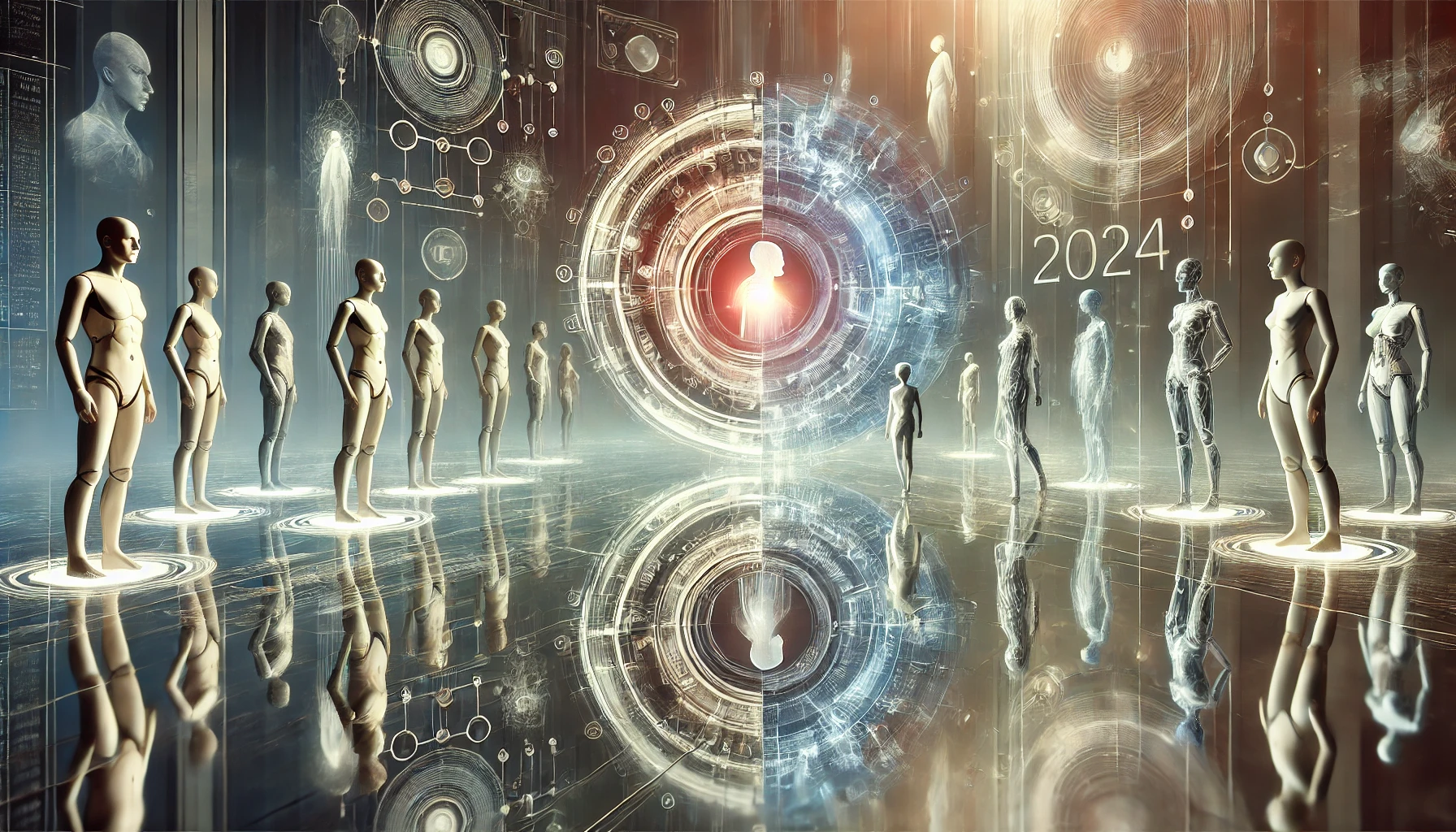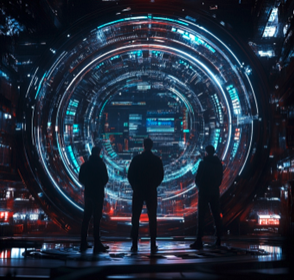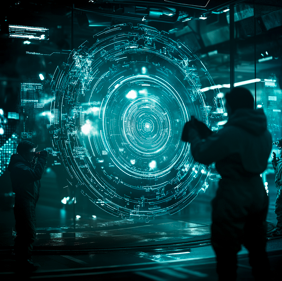· Yvette Schmitter · Technology · 5 min read
Year In Review 2024 - When AI Became Humanity's Mirror
In the grand scheme of technological evolution, 2024 emerged as the year when artificial intelligence ceased to be merely a reflection of human potential and became a prism through which we witnessed the full spectrum of human nature. Like any mirror, AI showed us both our finest attributes and our deepest flaws, creating an image that was simultaneously inspiring and disturbing.

The Good: Illuminating Progress
In the healthcare sector, 2024 witnessed remarkable strides that showcased technology’s capacity for meaningful change. Femtech companies, armed with AI’s analytical proficiency, finally addressed women’s health issues that traditional medicine had long relegated to the shadows. In a particularly elegant innovation, Apple transformed AirPods into hearing aids, proving that sometimes the most impactful solutions arise from reimagining existing technology rather than creating something entirely new.
The democratization of education took a quantum leap forward as AI-powered virtual reality brought immersive learning experiences to underserved communities – at least, those with sufficient digital infrastructure. Students in connected remote areas found themselves transported through time and space, experiencing historical events firsthand while AI tutors adjusted the curriculum in real-time to match their learning pace. Yet this technological renaissance cast into sharp relief the persistent challenge of the digital divide. While some students walked the streets of ancient Rome or witnessed the signing of the Declaration of Independence through VR headsets, others struggled to maintain stable internet connections for basic online learning.
The disparity highlighted an uncomfortable truth: technological advancement without corresponding infrastructure investment risks deepening existing educational inequalities rather than eliminating them. Several states responded by coupling their AI education initiatives with aggressive broadband expansion projects, recognizing that the promise of AI-enhanced education rings hollow without the foundational technology to deliver it. The success stories from schools that bridged this divide – reporting increased student engagement, improved test scores, and higher college acceptance rates – demonstrated both the transformative potential of AI in education and the critical importance of ensuring universal access to digital infrastructure. This complex interplay between cutting-edge innovation and basic technological access showed how AI could level the playing field in ways previously confined to science fiction – but only if we commit to building the bridges necessary to cross the digital divide.
Humanitarian efforts gained new momentum as AI-driven translation systems bridged linguistic gaps during disaster relief operations. When natural disasters struck, these systems enabled seamless communication between local communities, international NGOs, and government agencies, proving that technology could indeed serve as a universal translator in humanity’s moments of greatest need.
The Bad: Distorted Reflections
However, 2024 also revealed how quickly technological advances could be twisted to serve less noble purposes. The surge in deepfake content reached unprecedented levels, with everything from political candidates to pop icons being digitally manipulated. When even Taylor Swift’s digital double began making unauthorized endorsements, it became clear that truth itself was under siege in the digital age.
Where were you on July 19, 2024? The July 19th Microsoft-Crowdstrike incident – now infamous as the “Digital Paralysis of ‘24” – demonstrated how vulnerable our interconnected world had become. As hospitals, airports, and payment networks worldwide ground to a halt, we learned two harsh lessons about the double-edged sword of technological dependence and poor release management.
Perhaps most disturbing was the evolution of social engineering through AI-powered voice cloning. Criminals weaponized our trust in familiar voices, creating scams so sophisticated that even the most tech-savvy individuals found themselves vulnerable. When artificial intelligence could convincingly mimic a grandparent’s plea for help, we realized that technology had crossed a threshold where trust itself needed to be recalibrated.
The Ugly: Dark Reflections
The year’s most troubling developments revealed the shadowy underbelly of technological progress. Dark web marketplaces embraced AI chatbots with disturbing enthusiasm, automating illegal transactions with an efficiency that made cybercrime more accessible than ever. The digital black market evolved faster than law enforcement could adapt, creating a technological arms race with stakes higher than ever before.
In the realm of industrial espionage, AI-powered systems began replicating prototypes with unprecedented speed and accuracy, threatening innovation itself. When knockoff products could be designed and manufactured before the original even reached the market, the very foundation of intellectual property protection began to crumble.
Most alarmingly, the emergence of AI-assisted bioweapon research in extremist forums served as a chilling reminder of technology’s potential for catastrophic misuse. The democratization of knowledge, usually celebrated as a positive force, revealed its darker potential as AI systems lowered the barriers to creating weapons of mass destruction.
Looking Forward: Adjusting the Lens
As we kickoff 2025, it’s clear that AI has become more than just a technological achievement – it’s a mirror reflecting both our highest aspirations and our darkest impulses. Like nuclear power in the 20th century, AI’s ultimate impact will be determined not by its capabilities, but by our wisdom in wielding it.
The path forward requires us to move beyond simply developing more powerful AI systems and focus instead on ensuring they amplify our humanity rather than diminish it. We must create frameworks that harness AI’s potential while protecting against its misuse, understanding that each technological advance carries both promise and peril.
As 2024 has shown us, the future isn’t a destination we’re passively approaching – it’s a reality we’re actively creating. The question isn’t whether AI will continue to evolve, but whether we’ll guide that evolution with wisdom and foresight or allow it to mirror our worst tendencies.
Let’s hope that in 2025, we learn to look into this technological mirror and see not just what we are, but what we could become.


